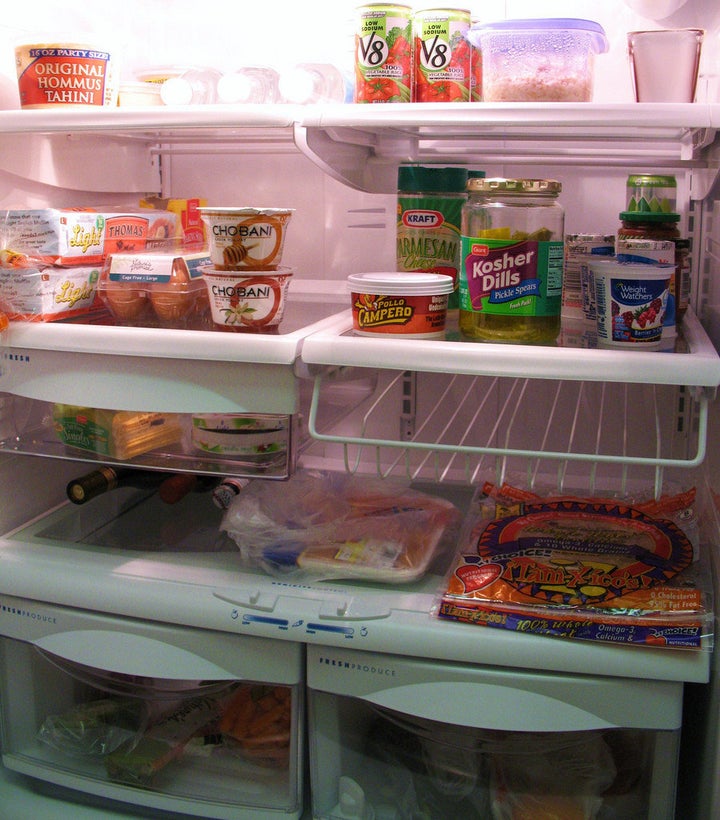
As Isaac's surge topped the levees and flooded New Orleans, I was reminded of Hurricane Irene's assault this time last year on areas near me in the western Catskills. Our bridge went out as did the power for many homes. We weren't prepared then, but I am making sure we are this time.
Our home is not in the flood zone, so my primary concern is the power goes out and it's several days before they are able to get it back on. Working from NRDC.org's Preparing for Disaster check list, I make sure we've got all the essentials -- the candles, batteries, bottled water, etc. -- in case we're holed up in the house for a few days. At first warning, I'm also going to fill up buckets and pots with water so we can flush toilets. If we're lucky and we don't lose power when the storm comes through, I can always use it water the plants.
I've also checked that the tank of our outdoor gas grill is full. Once I'm assured that I can cook, I'm thinking about what to stock in the pantry and even what meals I can prepare in advance and freeze.
What's in your freezer?
Sure, the freezer won't work either if the power goes out. But if you stock it right, you can probably get three full days of meals out of it. Which is exactly why, given all the weather weirdness we've been having, and the increased likelihood that at least once each year we'll be without power, I look at that freezer and what I stock in it very differently than I used to.
My freezer is no longer just a place for frozen desserts and long forgotten leftovers, where good food is packed away for months, sometime years. A few days without power, and the food waste that ensues, and the value of those few cubic feet of freezer space shoots up.
My freezer is now more of an extension of my refrigerator, and the foods I store in it more a part of my week's or month's meal planning. Gone are the year-old dried out cuts of meat, and all but two containers of ice cream. In their place, I'm putting containers of freshly made hearty soups (I've included a recipe below), fresh fish and chicken, and lots of frozen vegetables and fruits. I've even taken to freezing containers of yogurt.
The idea is not to stock the freezer and wait for the power to go out, but rather to continually stock and restock it so that if it does, you are ready with fresh, healthy foods that can be turned into a number of great meals.
Integrating foods from your freezer into your weekly and monthly meal plan is also a good way to reduce food waste. My goal is to use whatever is put in the freezer within three months of putting it there. This way I keep better track of what's there and am sure of its freshness.
Freezing vegetables
I've not typically frozen vegetables from my garden, but I am going to do so this time. Most garden vegetables and fruits freeze well, though a little preparation is necessary to destroy the enzymes and bacteria that break down their nutrients over time. Pickyourown.org offers very simple recipes for canning, freezing and jarring all your favorite garden produce.
Even tomatoes can be frozen. My neighbor told me of a great way to prepare and freeze fresh tomato puree.
A well stocked pantry
To be fully prepared for an emergency, make sure your pantry and not just your freezer is well stocked too. Keep a ready supply of whole-grain cereals, nuts, seeds and dried fruits, also peanut butter and energy bars. They're a great source of fiber, protein and nutrients.
It's also good to stock up on canned tuna and other seafood products that don't require heat to eat. But as NRDC reports here, seafood can be contaminated with high concentrations of mercury and other toxins, and some varieties of seafood have been overfished or caught in ways that harm marine life, I would recommend buying from Wild Planet Foods. Wild Planet sources only tuna caught by pole or troll catch fisheries -- rated as the best catch methods for tuna by the Monterey Bay Aquarium Seafood Watch® program. Also, their "troll caught tuna from the North Pacific fishery are lower in mercury because these migratory fish are smaller (about 9 to 25 pounds) than the long-line caught older fish that reach up to 70 pounds after ten to fifteen years of growth." Wild Planet canned seafoods are available in a number of stores but you can also buy it online.
Perfect "Power-out" Kale Soup
Now for that recipe for Portuguese kale soup. I got it from a friend, who got it from her sister, who said it makes a massive amount of soup and "gets better each day." Perfect. I'll store it in a few gallon-sized containers and take one out when I need it.
Ingredients (Choose vegetables that are organic, local, or best of all, fresh from your own garden wherever possible)
1 cup chopped onions
1/2 cup carrots
2 tbls olive oil
2 cloves fresh garlic, pressed
1 lb chopped potatoes
2 quarts vegetable broth
3 lbs can tomatoes
3 cans kidney beans
1 lb. chopped kale
1/2 lb kielbasa (some like to prick it first and boil a bit to get extra fat out before slicing/chopping)
1/2 cup olives, chopped
Preparation:
Saute onions and carrots in olive oil and garlic clove
Add potatoes and broth. Simmer until potatoes are cooked.
Add tomatoes and kidney beans. Simmer 10-15 minutes.
Add kielbasa and olives. Simmer another 5-10 minutes.
Add kale, salt and pepper to taste. My friend suggests adding the fresh kale to the soup the day you are going to eat it. So if you are going to warm up soup you have frozen, add it as you reheat it.